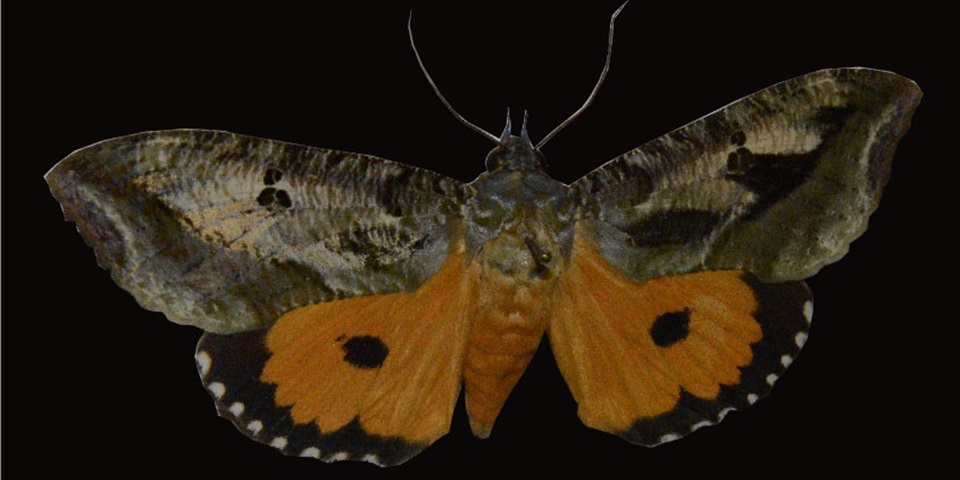News
Nanostructures on moth wings may aid courtship

The patterns on the wings of a nocturnal moth species can change in shape and position depending on the viewing angle thanks to specialised mirror-like nanostructures, new research has revealed.
In a paper co-authored by Murdoch University researcher Associate Professor Gerd Schroeder-Turk, a team of biologists and physicists studied the wings of Dot-underwing moths (Eudocima maternal), suggesting that the ‘shape-shifting’ optical effect might be used as a visual signal, potentially to attract mates.
Males of this widespread moth, found mainly in tropical Asia as well as Australia and Papua New Guinea, have three dark patches on each forewing that change in size and darkness depending on the viewing angle. In females, the whole surface of the forewing darkens with the changing angle.
Iridescent colours – those that change with viewing angle – are commonly observed in day-flying butterflies and hummingbirds that use these colours for signalling, for example during courtship. This study is the first to find angle-dependent colouration in a nocturnal species.
Optical tricks
Professor Schroeder-Turk said the special optical effects are produced by specialised scales in the wings.
“When viewed directly from above, these scales behave like mirrors, giving the wings a sparkly appearance. However, when the wing is viewed at an angle, an underlying layer of darker scales becomes visible, producing the dark wing patches in males,” he said.
Co-researcher Dr Bodo Wilts from the Adolphe Merkle Institute in Switzerland, said the optical nanostructures can bend light, often resulting in optical effects that cannot be achieved with pigments.
“Evolution has provided a diversity of mechanisms in insects, highlighting nature’s ability to bio-engineer nanostructures. The moth’s nanostructures are first of a kind to be described in night-flying insects and create this stunning visual effect,” Dr Wilts said.
Lead author Dr Jennifer Kelley from the University of Western Australia said some moths rapidly beat their wings before approaching a female. If this happened in the case of the Dot-underwing moth, the male’s wing patches would appear to flash on and off, which could be highly attractive to a female.
“However, we know very little about this species of moth, so the next step is to study courtship rituals,” she said.
Visual courtship behaviours are not known in nocturnal moths, which are considered to rely on pheromones for communication.
Understanding the evolution of low light systems
Associate Professor Schroeder-Turk said future studies on how animals communicate in the dark would further understanding of the evolution of low-light vision systems, with the potential to inspire novel optical materials.
“Some of the nanostructures used in the animal kingdom are as beautiful as the animals themselves, and many of them have pre-empted modern optical materials, by a few hundred million years,” Professor Schroeder-Turk said.
It’s always good to look to nature for inspiration for new material designs, as nature’s solutions tend to be robust, effective and sustainable”.
The study was led by researchers from the University of Western Australia and the Adolphe Merkle Institute in Switzerland, in a cooperation that also included Deakin University and the WA Museum.
The paper was published in the journal Current Biology.